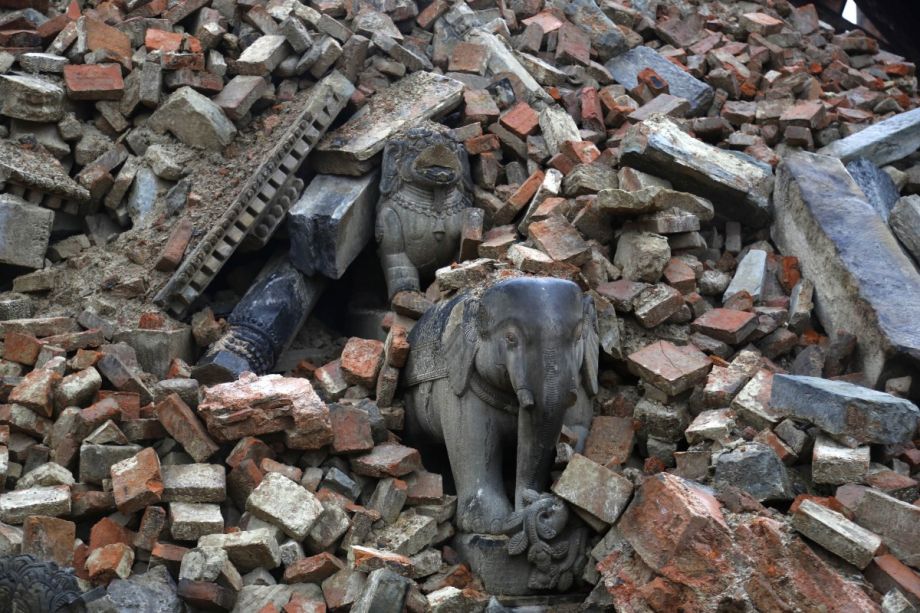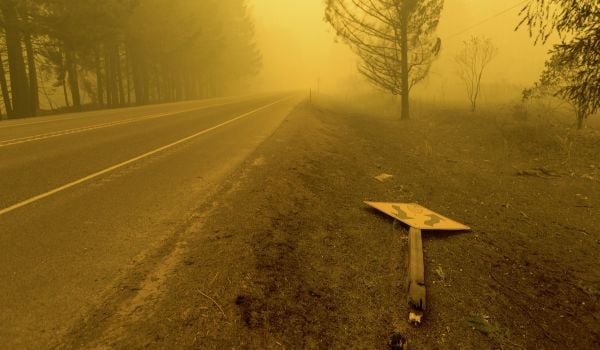What really saves lives in an earthquake? Six months ago this week, a massive temblor in Nepal made that question seem urgent. Hundreds of thousands were affected. According to recent USAID numbers, nearly 9,000 perished and nearly one million homes were damaged or destroyed.
Yet the country’s Kathmandu Valley today reveals a truth obscured in many reports of the quake and its aftermath. Despite a tremendous toll on human health, well-being and economy, a high percentage of local buildings are intact. Even among Nepal’s most classical architecture — an unusually high proportion of which fell, hurting or killing the humans within — there are structures standing in pristine condition, safe havens for the last earthquake or perhaps the next one.
If preventing deaths is a part of global health’s reason for being, Nepal — in particular, why many buildings in the historic city of Bhaktapur still stand — seems to highlight that urban planning is an essential part of the answer.
Parts of bucolic Bhaktapur are classified as a UNESCO World Heritage Site. The area endured major damage in the quake; some 388 locals died. Brick buildings dating as far back as the 12th century crumbled. Rebuilding will take years. But amid homes propped up with metal and wood poles, piles of salvaged bricks and outright rubble heaps, there are structures — ones in the same ancient style as the rest of the town — without a scratch.
What made the difference? A local guide named Rabin Bharati, whose own house was destroyed in the earthquake, says a big part of the answer is cement. The Bhimsen Temple, for example, looks great — which seems improbable, given its 1500s-era construction date. Bharati explains that Bhimsen and several other structures had undergone major restorations in the few years prior to the quake. Workmen had maintained every aspect of the originals, from the dimensions to the brick construction to ornate decorative carvings — with the exception of the clay traditionally used to hold bricks in place. This was replaced with modern cement, which, Bharati says, was able to resist the shearing forces of the temblor.
If simple, that materials change is widespread. A recent report from the Denver-headquartered Build Change, a nonprofit that focuses on earthquake and typhoon resilience, notes many structures in Nepal use “either cement or mud mortar, with styles varying based on location and building age.” Kishore Kumar Jha of the Nepal Engineering Association confirms that, when properly mixed, using cement mortar increases structural soundness.
It is by no means the only way to improve safety. The Build Change report notes that better brickwork, steel reinforcement and other modern techniques helped buildings withstand the quake. Jha cites good construction practices and general maintenance of older buildings. Even in Bhaktapur, where conserving traditional forms meant eschewing some of the strongest safety standards, “they don’t have to go for the reinforced concrete” that defines modern styles, Jha says. Simple shifts made a life-and-death difference — even despite their outward irrelevance to human health.
Architectural improvement can also help avoid memorable trauma for the living. Improved building strength explains the 2015 earthquake’s differences from the 1934 Nepal-Bihar earthquake, which destroyed many more buildings and killed many more people. Bhaktapur resident Sanumaya Kswalapala, who is 89, remembers that earthquake, which occurred when she was eight. With her grandson translating, she explains, “There was much more damage than in this time … when they [her family] come back to the home, minimal houses were [standing], and we were working at taking the dead bodies [out] to the side.”
However slight the move from clay to concrete might seem, and however big the impact, the preponderance of well-constructed buildings could be considered a little surprising. Not only is Bhaktapur a place of unchanging ancient traditions against a tide of steady modernization, but also in standing strong, those buildings in Nepal defied reasonable expectations for South Asia.
“If it had been Dhaka,” a friend says in a conversation about the earthquake, “it would have been every other building.” In addition to spending this year in Nepal, she lived for three years in Dhaka, Bangladesh. That city is a short flight from Kathmandu, but geographical closeness — and a shared vulnerability to seismological activity — does not equate to similar building standards.
Inescapable examples have illustrated Dhaka’s vulnerability. On April 24, 2013, Rana Plaza, a factory constructed to illegal height on an unstable foundation with improperly mixed concrete, collapsed with well over 3,000 workers inside. About 1,129 people died and many were injured in an incident that one local resident described as “like an earthquake has struck here.” (The infamous collapse triggered global action, and a subsequent inspection process of local garment factories discovered at least 30 more structures that required immediate, permanent closure. More recently, over 40 Rana Plaza owners, managers and engineers have been charged with murder.)
Building safety is not just Bangladesh’s problem. In April 2013, an apartment house in Thane, Maharashtra, India, fell down, leaving 74 dead. Like Rana Plaza, that structure had been illegally built and wasn’t up to code. In the days after that incident, India’s Ministry of Housing and Urban Poverty Alleviation described 19 million households in similarly precarious structures. Public recognition of the problem led to efforts at changing policy and practice. The change couldn’t come fast enough: That August, another building in Mumbai collapsed, killing 12.
With those smaller-scale disasters in mind, one would imagine a massive earthquake in Nepal could have been extremely deadly. In truth, doing better than Nepal has done is possible; in earthquakes in Chile and Japan, safety standards ensured a death toll of virtually zero — far better than Nepal’s 9,000 dead. According to Build Change, “While the people of Nepal are committed to building back … safer, earthquake-resistant structures, the construction practices commonly used will require change to accomplish this.”
Such change has been happening: The Nepal Society of Earthquake Technology has been training informally employed stone masons in earthquake-safe building since 1999. Without that effort, the death toll might have been even higher.
Still, the lesson to make small but crucial changes remains relevant across South and Central Asia today. And reminders to implement it are never far off. Just this Monday, a 7.5-magnitude earthquake hit northern Afghanistan, sending reverberations into Tajikistan, Pakistan and India. About 275 people died, and thousands of buildings crumbled.
The “Health Horizons: Innovation and the Informal Economy” column is made possible with the support of the Rockefeller Foundation.

M. Sophia Newman is a freelance writer and an editor with a substantial background in global health and health research. She wrote Next City's Health Horizons column from 2015 to 2016 and has reported from Bangladesh, India, Nepal, Kenya, Ghana, South Africa, and the United States on a wide range of topics. See more at msophianewman.com.
Follow M. Sophia .(JavaScript must be enabled to view this email address)

















